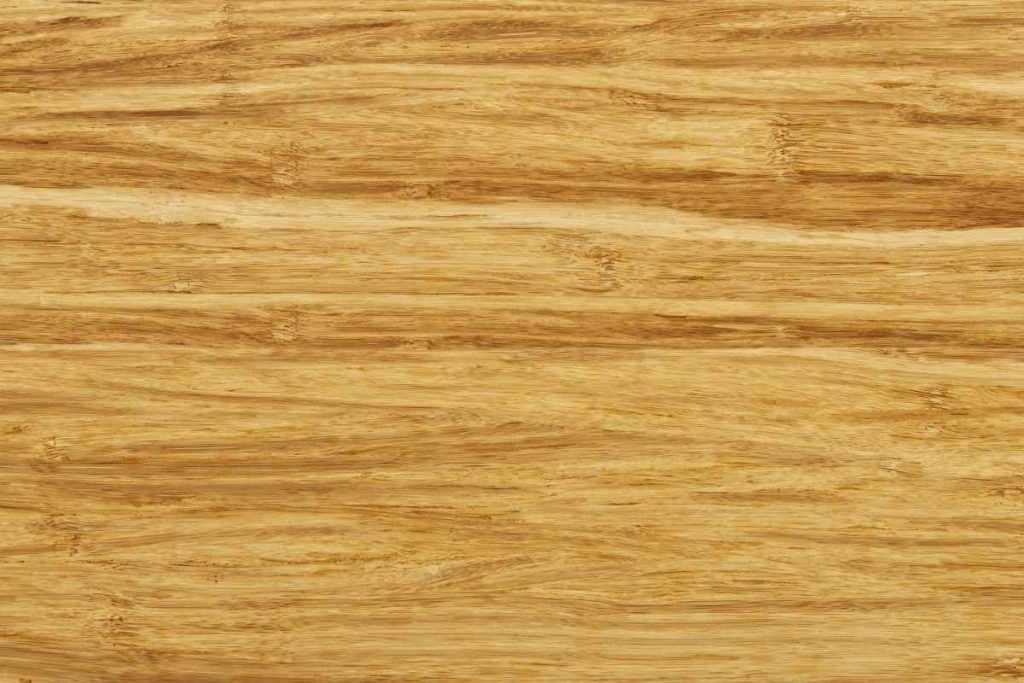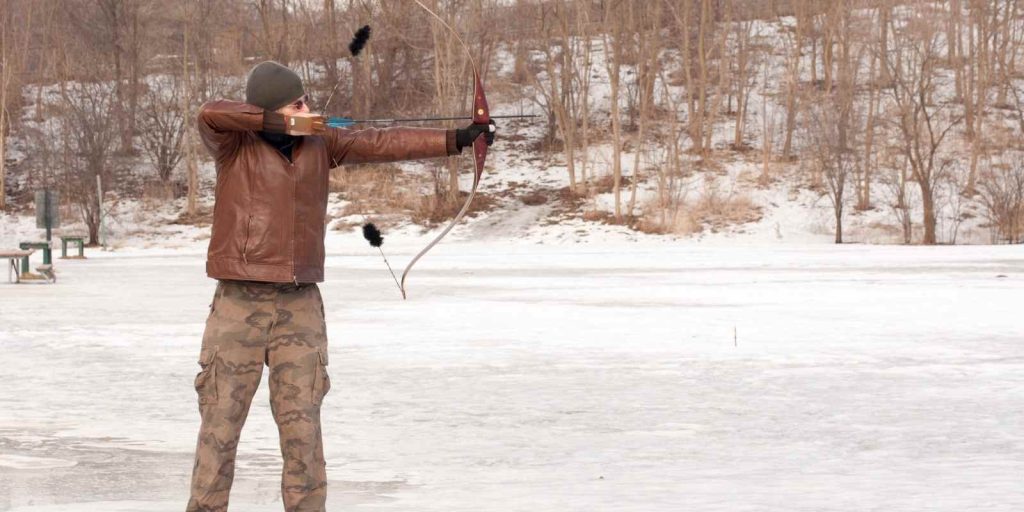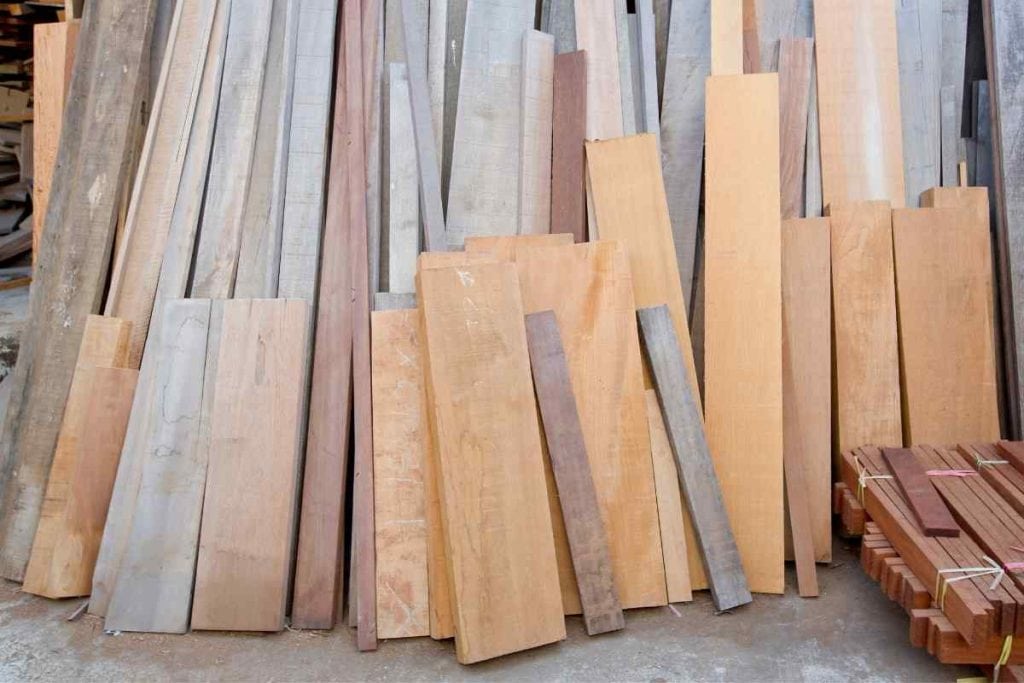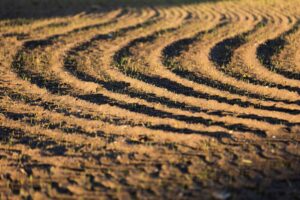If you are thinking about building a recurve bow, you may be wondering what type of wood is best? This is something that I have researched recently, and I have found some interesting information.
Well, first off. I am not a bow maker! What you’ll find here is the information I found while researching the topic for myself. Maybe you’ll find it helpful, maybe not. Let’s get started.
Contents (Jump to Topic)
ToggleWhat The Wood?
We are looking for wood that is bendable and at the same time won’t break so easily.
If you take a look at the famous English Longbows from the Middle ages, you will learn that
“the best bows were made of yew, cut with the heartwood on the inner side. This compressed when the bow was drawn, while the sapwood on the other side stretched. The combination provided immense power.”
Source: https://www.military-history.org/feature/medieval/the-longbow.htm
Those bows were absolute monsters! They measured six to seven feet and had a draw weight of 150lbs and more! It took years to master those bows. The English archers were feared throughout Europe due to the devastating effects they had against their enemies.
In addition, the longbows could shoot arrows up to 250 yards away! That is impressive, right? Well, that is only possible because of the excellent characteristics of the wood used to build them.
Yew has a low density and high strength. So if we want to make our own recurve bows, we need to use wood with similar characteristics.
Elasticity & Strength
Wood that bends but does not break easily. A combination of several values:
- Elasticity – modulus of elasticity (MOE)
- Strength – modulus of rupture (MOR)
Feel free to check out The Wood Database – They did extensive calculations to find the best and worst woods for bow making.
8 Best Types of Wood for Making a Bow
We need solid but flexible woods to handle appropriate draw weights! Our ancestors had to use what was available. However, nowadays, we can choose the material we like the most or even design our own bow according to our needs. We also have access to many types of wood, which makes things much more manageable.
So let’s talk about the different kinds of woods you can use to create your own recurve bow (in no particular order).
Maple
Maple trees grow all over the northern hemisphere, and therefore maple is readily available. The main characteristic of maple is its hardness. Hard maple It is one of the hardest woods around. Maple is also very dense, heavy, straight-grained, and fine-textured. However, you can shape it and carve it into whatever you like.
Maple was traditionally used for making bows by people from the Ottoman Empire. Maple is affordable and ultra-durable.
Hickory
Hickory trees are native to North America and Asia. Hickory wood is hard, stiff, dense, and shock-resistant. Hickory was used for bow making by Native Americans. The wood is easy to work with and is suitable for carving. You can shape hickory into any form you like.
Hickory is quite expensive, though. But if you don’t mind spending money on something you’ll never see again, then go ahead and buy some hickory.
Osage Orange
Osage orange or Maclura pomifera originated from southern Oklahoma, western Arkansas, and areas of east Texas. It was used by the Native Americans to make excellent bows.
Osage orange is known for its durability, resistance to insects, rot, and decay. It is also resistant to termites. The wood is light, soft, and easy to cut. It doesn’t splinter easily and is exceptionally durable.
The downside is that osage orange is challenging to work with. If you plan on using this type of wood, you will need to invest a lot of time and effort into shaping it. Osage Oranges are sometimes referred to as Bois d’arc, which means “bow wood” in American French.
Yew
Yew or Taxus Baccata is an evergreen timber tree native to an area stretching from central Europe to the Caucasus. Native to America in the Pacific- or Western Yew. In the U.S., it’s primarily used for landscaping.
In Europe, yew was the preferred wood of the Welsh and English bowers. The famous English longbow was made of yew.
Yew is dense, hard, and strong. The wood is naturally resistant to fungi and insects. Yew wood is expensive due to its rarity.
Elm
A native of North America, the American Elm (Ulmus Americana), can be found from Texas to Florida, Maine to North Dakota, and seven provinces in Canada.
Despite being classified as a “soft hardwood,” elm is more difficult to split than other woods due to its cross-grain structure. Elm is great for beginners because it’s relatively inexpensive.
Bamboo

Bamboo is lightweight, flexible, rigid, high tensile. Originating in Asia, Africa, and Latin America, bamboo extends as far north as the southern United States.
Traditional Japanese bows, such as the Daikyu and Hankyu, were made by laminating bamboo, wood, and leather. Bamboo is easy to work on with standard woodworking tools. There are plenty of tutorials online that show you how to make a flat bow from bamboo.
Dogwood
Dogwood trees are native to the eastern parts of the United States. It has a high density and interlocking grain – making it one of the hardest domestic woods of the U.S.
Dogwood is relatively rare and, therefore, a little pricier than other woods. Dogwood is suitable for beginner archers and those who want to learn about woodworking.
Cherry
Cherry trees are native to the Northern Hemisphere. Cherry trees have been cultivated since ancient times. They’re widely planted throughout the world today.
Cherry is relatively cheap and easy to work with. It’s not too heavy and does not warp. In addition to laminate bows (e.g., backed with Ash or Hickory), black cherry can also be made into fine selfbows. Because cherry is stronger in compression than tension, your bow would require a wide shape.
More Woods?
The list could go on and on. There are many kinds of wood that are suitable for bow making. I’ve listed some of the more favorites above. You could use almost any wood to make a bow. Here is a list of some of the bigger bow makers.
It is crucial to find boards with a very straight grain. Avoid knots and curves! Even if you managed to make a bow with knots and curves, the bow’s strength would be severely diminished.
Check out this tutorial from Michael Spink for a step-by-step guide to making a longbow.
Summary
What are the best woods for bow making? Basically, the answer depends on your personal preference. Theoretically, every wood can be used to build a bow. Some timbers were traditionally preferred over others. But there are plenty of different woods that you can use to make a bow. (read.. barebow archery equipment)
If you’re a beginner and want to start with something simple, choose from less expensive woods such as maple or elm. This will not only save you money but also give you a better learning experience. Make sure to avoid knots and curves when picking out the boards. Other than that, have fun!
Sam Harper
“There are bow woods I’ve tried and bow woods I haven’t tried. This is a list of bow woods (and grass in the case of bamboo) I’ve tried or heard a lot about. I’m only considering limb wood material, not handle wood material. Don’t limit yourself, though. People are trying new things all the time.“
The following article was written by Sam Harper and originally published on his site poorfolkbows.com.
Red oak
The great thing about red oak is that it’s easy to find and it’s cheap. It’s ideal for somebody who is just starting out. Just about every Home Depot or Lowes I’ve been to has it. They sell it in the perfect size, too. It comes in a 72″ long board they call a 1×2, which is actually 3/4 x 1-1/2. Red oak is very porous, and most of the pores are in the early growth rings, so it’s important to find a piece with thick late growth rings or else it will seem brittle. Those boards will feel heavier. If you find a board with very straight grain, you don’t necessarily need to back it, but it’s a good idea to back any board bow.
Bamboo
The wonderful thing about bamboo is that you’re guaranteed to have straight grain. Bamboo bows rarely fail if done right. Some people call bamboo nature’s fiberglass. It’s great bow material, and it’s cheap. Bamboo comes in different forms—raw bamboo and bamboo flooring boards.
If you get the flooring boards, be sure to get vertical grain. The horizontal grain will come apart. Bamboo flooring makes a great bow if backed with raw bamboo. All bamboo bows are my personal favourite.
They’re quieter than any other bow I’ve made, and there’s just something about the way they feel when you draw them and shoot them that’s hard to describe. There’s a smoothness about them.
The only bad thing I have to say about bamboo bows is that they take a lot of set. It’s a good idea to put a lot of reflex in the bow at glue-up if you want to have any left after tillering.
Vertical grain flooring boards can also be cut into laminations. People sometimes refer to it as “action boo.” It’s ideal in the core of a fiberglass bow, because it’s light and strong.
Raw bamboo is just a slice of a solid piece of bamboo with the nodes still intact. It makes a great backing to almost any kind of bow.
is very strong in tinsel strength, so it needs to be very thin to avoid overpowering the belly wood. Some woods that are good with raw bamboo backing include osage, yew, ipe, and bamboo, because they can withstand the compression forces.
Hickory
Hickory is popular for backing bows. Like bamboo, it’s very strong in tinsel strength, so it needs to be thin. It’s not quite as strong in compression strength.
It makes a good self bow, too. I haven’t made a self bow out of it, but from what I’ve read, it’s almost impossible to break.
Some people question its durability, though. Apparently, it takes a lot of set over time and becomes sluggish. I think this may be due to the fact that hickory sucks up a lot of moisture from the atmosphere.
It needs to be a tad dryer than other woods to get the best performance out of it. The only problem with using it to make a self-bow is that it’s almost impossible to get the bark off of it. I’ve heard several different methods, the most popular being to put it in a hot shower for 20 or 30 minutes before trying to get the bark off with a chisel.
Osage
Some people consider osage (bois d’ark) to be a weed, but to those of us who make bows, it’s gold. I love everything about osage except for the fact that it’s hard to find a straight piece of it without knots.
It smells good, it looks good, and it’s the ideal bow wood. It lasts forever without taking a set, and it’s very strong in compression strength. I can’t say enough about osage. I just love it. If only it were easier to come by!
Ipe
It’s pronounced EE-pay. It’s the same thing as Brazilian walnut. It’s very strong, so you can make thinner and lighter limbs, resulting in a faster bow. It goes well with a bamboo backing.
Ipe is used in decks, because it’s so resistant to decay. That makes it a good bow wood, too. Some people have allergic reactions to it, so beware.
Ash
I hate ash. I don’t know why anybody bothers with it. It breaks too easily.
Cedar (or Juniper)
There are different kinds of cedar. That cedar you find at Lowes and Home Depot is pitiful for making bows. It’s way too brittle. Juniper (or aromatic cedar) is a lot better, but it’s brittle as well.
It’s great under clear fiberglass, though, because some pieces of it are just beautiful. It smells good, too.
Poplar
It’s tempting to try poplar since it’s so cheap and available, but it’s too soft to make a decent bow out of.
Black Locust
Okay, I haven’t actually tried this one, but I’ve heard good things about it.
Yew
I haven’t tried this one either. Yew is supposed to be ideal for making longbows because it’s so strong in compression that it’s one of the few woods that can withstand the D-shaped cross-section of an English longbow. The problem with it is that it’s too expensive.
Black walnut
I’ve only used walnut in a fiberglass bow. I think it’s beautiful. I didn’t like the way it smelled when I first started using it, but the smell grew on me. I’ve heard it works well in non-fiberglass bows, but I haven’t tried it.”







